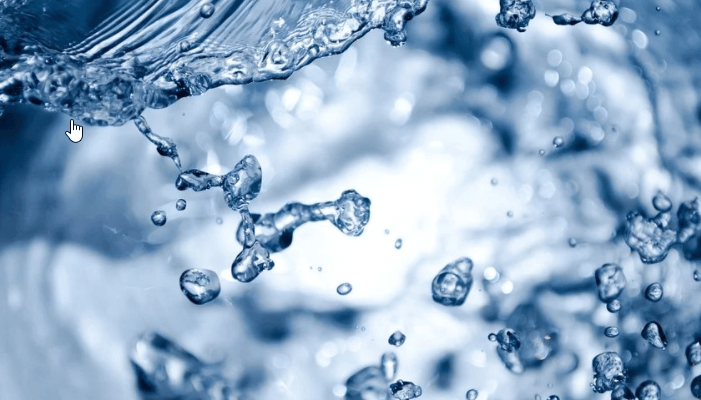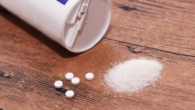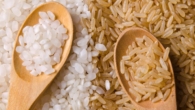
9 doctor-approved ways to remove excess fluid from the body
0
Warming up can also help , and changes in nutrition.
How to understand that there is excess fluid in the body
The most noticeable sign of fluid retention is swelling. The face becomes swollen, the legs in the area of the ankles become heavier and increase in volume, the rings sink into the fingers. But an excess of water can occur much earlier, even before the appearance of swelling.
Experts from Harvard Medical School suggest focusing on weight. If you did not change your lifestyle, and the scale suddenly began to show plus 1-2 kg or more, most likely, the reason is fluid retention.
Most people gain from 3 to 7 kg of excess fluid before when the swelling of the legs or abdomen is noticed for the first time.
Why excess fluid accumulates in the body
Water retention can have various reasons. Including natural and relatively safe. For example:
- premenstrual syndrome and pregnancy in women;
- the habit of eating very salty food;
- long immobility – yes, fluid accumulates in the lower extremities, when you have to sit for many hours on a plane or bus.
Also, swelling can be a side effect of certain medications. In particular, drugs prescribed for hypertension and diabetes, hormonal agents based on estrogen, steroids. Even ibuprofen and other NSAIDs sometimes lead to fluid retention.
However, serious conditions such as:
- chronic heart failure;
- cirrhosis;
- chronic venous insufficiency;
- problems with the lymphatic system;
- long-term protein deficiency.
- li>
< li>kidney diseases;
Should excess liquid be removed
For healthy people, fluid retention is more of an aesthetic problem. Swelling caused by hormonal changes during PMS or a herring eaten at night usually goes away on its own within a couple of days at most. It is up to you to speed up this process or “it will work out that way”.
But if swelling becomes regular, permanent or appears against the background of already existing diseases – for example, cardiovascular disorders, you need to get rid of excess fluid. Otherwise, the excess water will become an additional burden on the heart, kidneys, veins and worsen your condition.
When you need to see a doctor
Experts from the Mayo Clinic, one of the largest research and medical centers of the world – list threatening signs. If you notice them, try to get help as soon as possible.
- Sudden swelling is accompanied by chest pain, shortness of breath, confused shallow breathing. This may be a sign of pulmonary edema or anaphylactic shock. With such symptoms, you need to act immediately. Dial 103 or 112.
- The skin over the swollen area has stretched to the point of glistening. Or, after pressing on the swollen area, a dimple remains there for a long time. With such signs, you need to consult a therapist and undergo the examinations prescribed by them.
- After you have spent a lot of time sitting, your leg is swollen and painful, and this condition persists for a long time. This is how deep vein thrombosis can manifest itself. Consult a therapist, phlebologist or vascular surgeon.
It is worth seeing a doctor even if there are no dangerous signs, but fluid retention occurs against the background of some chronic disease. The doctor will conduct an examination, ask you about your well-being and recommend ways to get rid of swelling.
How to remove excess fluid from the body
These methods are suitable for healthy people. But doctors often recommend them to patients with chronic diseases (be sure to consult a doctor before starting!).
1. After kneading
Fluid retention is often associated with circulatory disorders. When the blood stagnates in one or another area, the pressure rises and moisture begins to squeeze through the vessel walls into the intercellular space. Here it is delayed.
To get rid of fluid stagnation, a light warm-up is enough. It will improve blood circulation and help the body remove excess moisture through the kidneys. Ask your therapist which exercises will be the most effective and safe in your case.
2. Make a light massage
Gently press, stroke the swollen areas in the direction of the heart. Such a massage will help remove excess fluid from the tissues, and then it will enter the bloodstream and be filtered by the kidneys.
3. Lie down with your legs elevated
Excess fluid often accumulates in the tissues of the legs — simply due to gravity, due to which blood flow in the veins of the lower extremities becomes difficult.
When you lie down and raise your legs above the level of your heart (for example, put your ankles on a rolled up thick towel or pillow), universal gravity begins to work on you. The blood flows towards the heart, the pressure on the vessel walls decreases, the liquid from the tissues of the lower extremities returns to the bloodstream.
4. Go to training
Your task is to move so actively that you sweat. According to studies, on average, people lose from 0.5 to 2 liters of fluid during an hour of training. The difference is related to the individual characteristics of the body, the degree of stress, the temperature of the surrounding air and the chosen clothing.
In addition, during exercises, the muscles need more water and it comes to them from the surrounding tissues. So training can simultaneously save you from visible puffiness.
5. Wear compression socks or stockings
This is another way to improve blood circulation in your legs and get rid of fluid retention.
6. Take over-the-counter diuretics
Such products stimulate the activity of the kidneys and help the body to remove excess water.
Keep in mind that diuretics have side effects. Therefore, you should take them only after consulting a therapist.
7. Avoid salty food
Salty food causes the body to retain fluid. This is a physiological process.
The key element of table salt is sodium. Approximately the same amount of it is always present in the fluids of the human body. The concentration of dissolved sodium (and other electrolytes) is called osmolarity. In order for a person to remain healthy, it must be within certain, rather narrow limits.
Therefore, when a lot of salt enters the body, our body begins to store water to dilute the excess sodium.
To not to provoke fluid retention, WHO experts recommend consuming no more than 5 g of salt per day.
8. Eat foods high in potassium
The mineral has the ability to reduce sodium concentration. This will help the body get rid of excess water.
The American Heart Association lists foods rich in potassium:
- greens, including leafy greens, such as spinach;
- peas;
- potatoes;
- mushrooms;
- bananas;
- avocado;
- tomatoes and tomato juice ;
- citrus, such as oranges, and their juice;
- plums, apricots, other stone fruits and their juice;
- raisins and dates;
- milk with a fat content of up to 1%;
- fat-free yogurt;
- tuna and halibut.
9. Eat foods rich in magnesium
Fluid retention in tissues and associated swelling can be signs of magnesium deficiency. Therefore, sometimes a diet rich in this mineral helps to cope with excess water.
Experts from the American Cleveland Clinic suggest eating the following foods:
- nuts and seeds;
- legumes;
- whole grain foods rich in fiber;
- low-fat dairy products;
- leafy greens;
- dark chocolate.
>









Leave a Reply